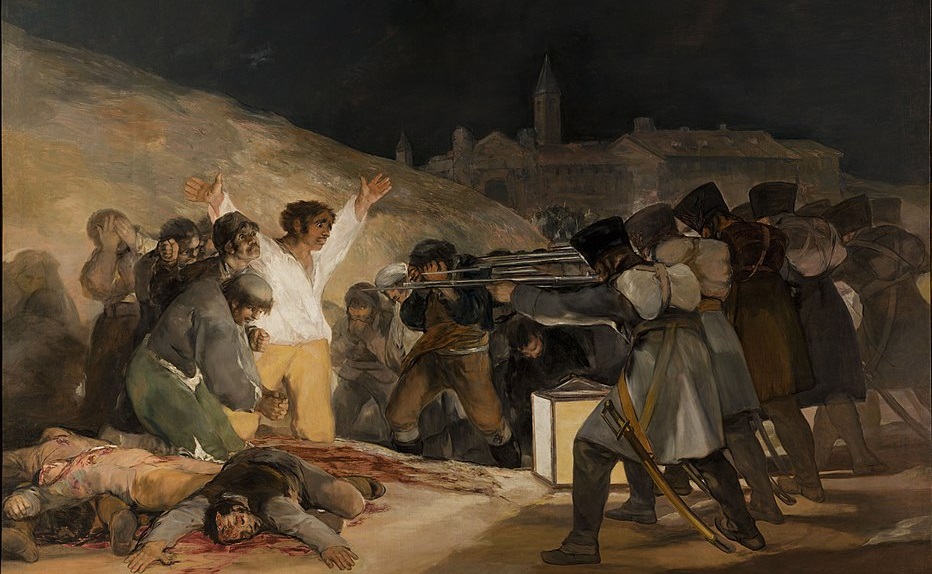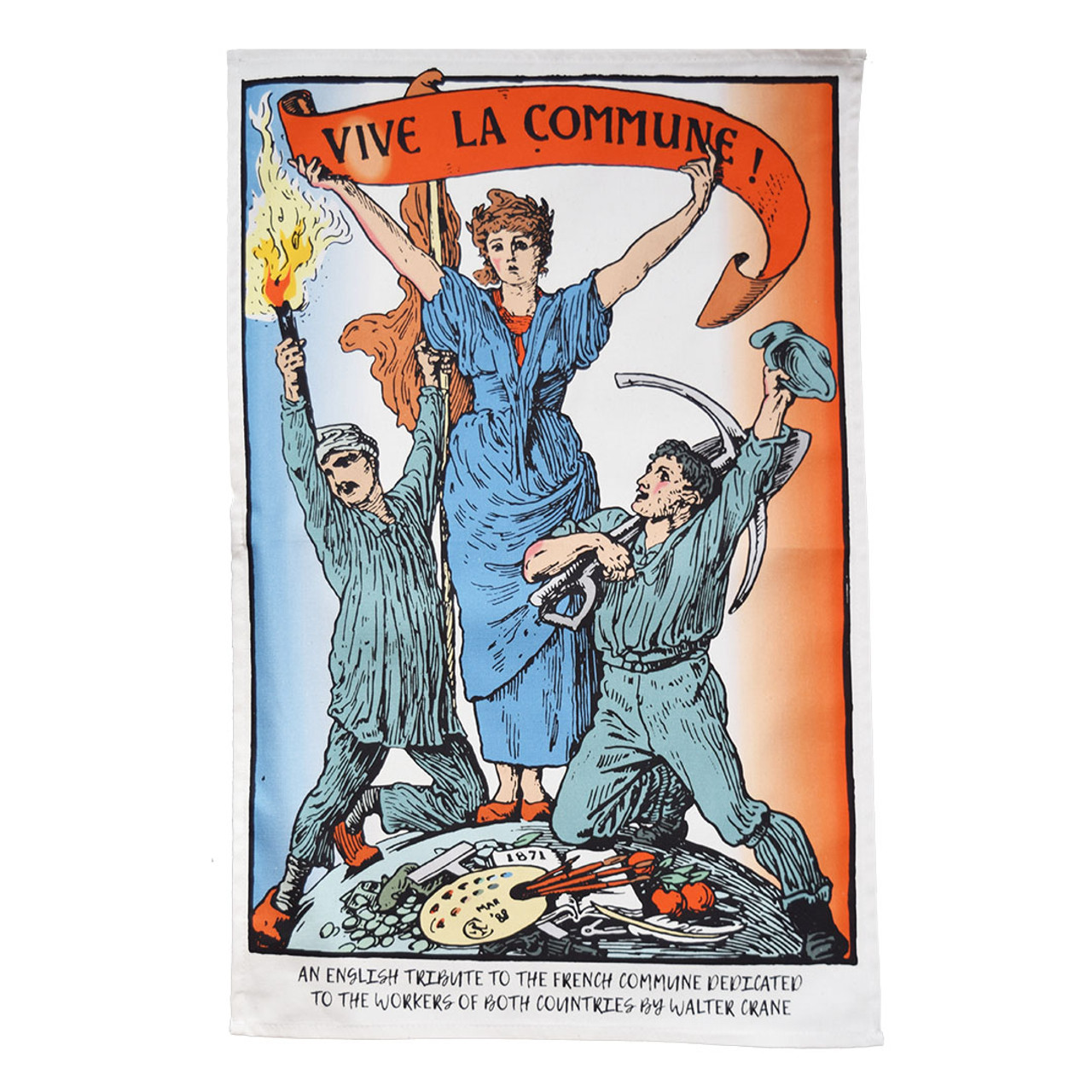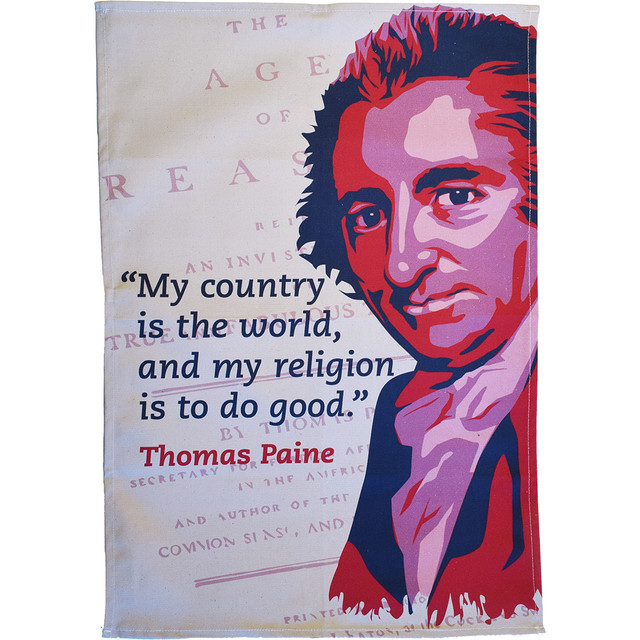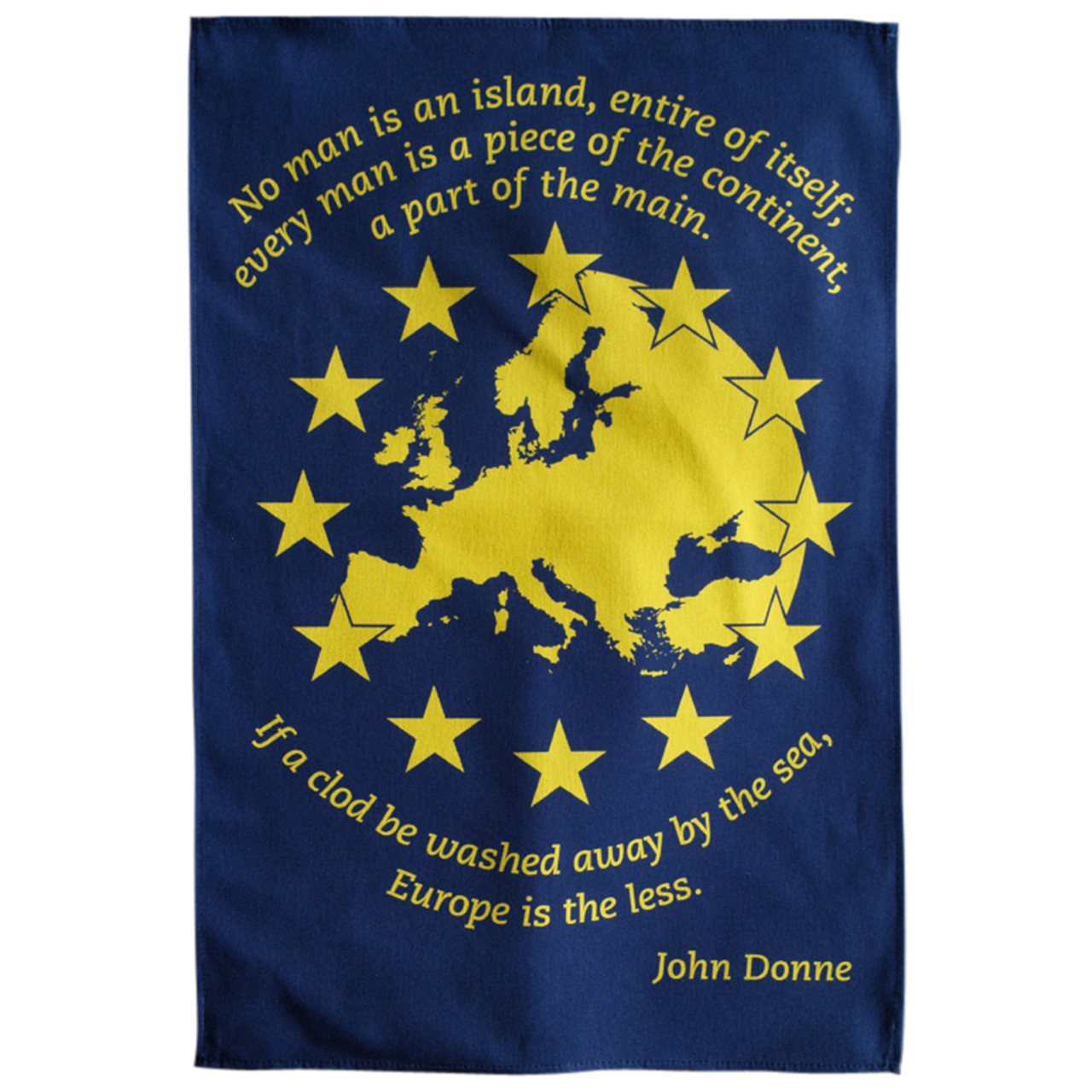Spain Without a King: The Spanish Revolution of 1820
Posted by Pete on 8th Mar 2024
The Spanish Revolution of 1820 sought to re-establish an earlier radical liberal democratic experiment

Francisco Goya's El Tres de Mayo commemorating the Spanish resistance to Napoleon
Revolutions rarely move in a straight line. They always face reversals; sometimes they’re crushed outright – ask the Parisian Communards.
But revolutionaries have often overcome setbacks, too. The storming of the Bastille, after all, was a successful effort to head off a counter revolution in France.
Another case of revolutionaries bouncing back from apparent defeat was Spain in 1820.
The Paris Commune of 1871 was short lived, though it inspired socialists and artists like Walter Crane decades later
See the Paris Commune tea towel
Over a century before the revolutionary socialist politics of Spain during the 1930s, the Spanish people were already in the vanguard of European radicalism.
In 1808, long after Napoleon had overthrown the French Revolution, the French Empire invaded Spain.
It was a big mistake.
The French invasion provoked a popular rebellion in Spain. Spanish rebels pioneered the strategy of guerrilla warfare, later taken up by revolutionaries like Che Guevara and Abd el Krim, to resist the numerically superior French occupiers.
The Spanish fought for national independence, but they also fought for a new, more democratic politics.
Before 1808, Spain might have been ruled by its own kings, but those kings were absolutist dictators.
The Bourbon princeling, Ferdinand VII, ruled Spain at the time of the French invasion of 1808, but Napoleon captured Ferdinand and imprisoned him in France.
In Ferdinand’s absence, his radicalised subjects turned Spain into a far more popular state than he would ever be comfortable with.
The Spanish revolutionaries, while fighting against France, created a representative parliament, and they declared that the people were sovereign in Spain, not the royal family.
From the late 18th century and into the early 19th, radicals were empowered to explore new forms of democratic government, inspired by the ideas of philosophers like Thomas Paine
See the Thomas Paine tea towel
In 1812, Spanish radicals created the country’s first codified constitution – the so-called ‘Constitutión de Cádiz’ – and it was a radical document for the time, inspiring similarly ambitious political projects in other parts of the Mediterranean world, including Italy and Portugal.
It was in the context of this radical combination of popular resistance to an imperial invasion and democratic reform in Spain that the modern term “liberal” was invented and then exported to the rest of Europe.
Spanish “liberales” invented modern liberalism at a time when that ideology was a far more revolutionary force than it’s since become.
But Ferdinand VII wasn’t best pleased with the radical political experiment of his subjects.
When he was restored to the Spanish throne in 1814, after British, Spanish, and Portuguese forces drove Napoleon’s army out of the Iberian peninsula, Ferdinand cancelled the Constitution of Cádiz.
A hard-headed autocrat who believed he had a divine right to tyrannise millions of his fellow human beings, Ferdinand restored absolutism.
The free press was abolished in Spain, and radical liberales were either jailed or driven into political exile. Even the theocratic Spanish Inquisition was restored!
But revolutions, to repeat, rarely move in a straight line.
Countries across Europe were trying to shake off their absolute monarchies in the early 19th century, establishing the liberal ideas that were to form a bedrock of modern governments
See the Europe John Donne tea towel
Ferdinand couldn’t put the genie back in the bottle: liberals in the Spanish army launched a rebellion and demanded the restoration of the Constitution of Cádiz.
The king only had himself to blame.
A key part of Ferdinand’s reactionary political program since 1814 had been to re-intensify efforts to reconquer the Spanish colonies in the Americas.
Those colonies had been fighting wars of independence since the early 1810s, led by rebels like Simón Bolívar and José de San Martín.
But ordinary Spanish soldiers didn’t want to go across the Atlantic to die in combat or from disease, just to satisfy Ferdinand’s imperial greed.
It was precisely these disgruntled troops who rebelled against the king in 1820, largely to avoid being sent to the colonial warzones.
The Spanish rebels, led by charismatic radical liberals such as Colonel Rafael del Riego (1784-1823), beat back the diehard supporters of Ferdinand VII and, on this day in 1820, forced him to restore the Constitution.
For the next three years, the Spanish people enjoyed a new period of democratic self-government.
There were more twists in the tale to come. Ferdinand was restored to absolute power (again) in 1823, helped by the armies of his reactionary allies elsewhere in Europe.
Ever since, Spanish history has involved frequent back-and-forth between democratic government and dictatorship, revolution and counter-revolution.
And in this sense, the radical history of Spain isn’t peculiar.
The story of revolutionary progress has always been turbulent: victories are only ever provisional, but so, too, are defeats.



